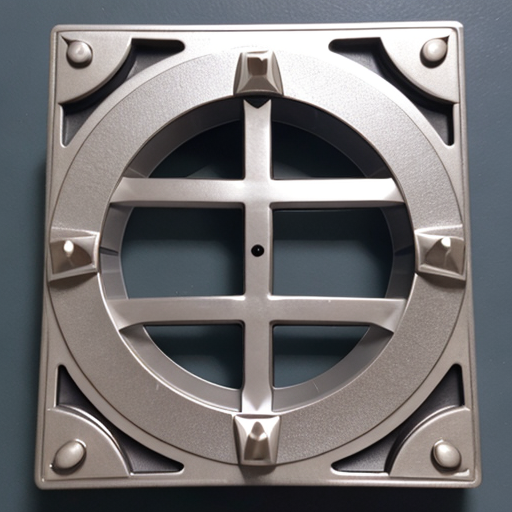What is a Studor Vent?
The Studor Vent, also known as a pressure relief vent, is a vital component found in range hoods and other ventilation systems. It is designed to prevent pressure imbalances and ensure adequate airflow by equalizing the pressure between the kitchen and the outside environment. By doing so, it helps maintain optimal ventilation efficiency and prevents unwanted side effects, such as decreased exhaust performance or backdrafting.
Function and Operation:

The primary function of the Studor Vent is to regulate pressure differentials that may occur when a range hood is in use. When the range hood’s exhaust fan operates, it creates negative pressure in the kitchen, pulling air out of the space. This negative pressure can cause problems, including the potential for backdrafting, where outside air is drawn into the kitchen through unintended pathways, such as chimneys or flues.
To mitigate these issues, the Studor Vent is strategically installed in the range hood’s ductwork. It consists of a one-way valve that allows air to flow out of the kitchen but prevents air from entering. The valve opens when the pressure inside the duct exceeds the pressure outside, effectively equalizing the pressure and maintaining a balanced airflow. When the range hood is not in use, the valve remains closed, preventing the reverse flow of air.
Benefits of the Studor Vent:
Prevents Backdrafting: By equalizing the pressure between the kitchen and the outside environment, the Studor Vent significantly reduces the risk of backdrafting. This is particularly important in tightly sealed homes or those with other exhaust systems, such as central heating systems or bathroom fans, which can create negative pressure in the kitchen.
Maintains Exhaust Efficiency: Proper pressure balance provided by the Studor Vent ensures consistent and efficient operation of the range hood’s exhaust fan. It allows the fan to expel cooking byproducts effectively, including smoke, odors, and airborne contaminants, without hindrance or reduced performance.
Enhances Indoor Air Quality: By facilitating efficient ventilation, the Studor Vent helps maintain excellent indoor air quality. It ensures that cooking-related pollutants are effectively removed from the kitchen, preventing them from spreading to other living areas and reducing the potential for health issues associated with poor air quality.
Minimizes Energy Loss: The Studor Vent contributes to energy efficiency by preventing unnecessary air leakage. It ensures that air only flows in the desired direction (out of the kitchen), minimizing energy losses associated with uncontrolled airflow, and helping to maintain a comfortable and well-regulated indoor environment.
Considerations and Installation:
When incorporating a Studor Vent in a range hood installation, several considerations should be taken into account:
Proper Sizing: The Studor Vent should be sized appropriately to match the airflow capacity of the range hood. A professional installer or HVAC specialist can determine the appropriate size based on factors such as the fan’s cubic feet per minute (CFM) rating and the kitchen’s size and configuration.
Installation Location: The Studor Vent is typically installed in the ductwork of the range hood, preferably in an accessible location for maintenance and inspection. It should be placed away from sources of heat or moisture to prevent any interference with its operation.
Regular Maintenance: Like any other component of a range hood, the Studor Vent requires regular maintenance to ensure its optimal performance. This includes periodic inspection to check for any obstructions or debris that may hinder the valve’s operation. Cleaning the vent and its surrounding area is also essential to prevent the buildup of grease or dirt, which can affect its functionality.
Professional Installation: While some homeowners may attempt to install a Studor Vent themselves, it is recommended to seek professional assistance. HVAC technicians or qualified installers have the expertise and knowledge to properly install and ensure the correct functioning of the Studor Vent. They can also address any specific requirements or considerations based on the kitchen’s layout and local building codes.
Examples of Studor Vent Implementation:
To better understand how the Studor Vent functions in practice, let’s consider a couple of examples:
Scenario 1: A homeowner has recently renovated their kitchen and installed a new range hood with a high-performance exhaust fan. To maintain proper ventilation and prevent pressure imbalances, a Studor Vent is integrated into the range hood’s ductwork. When the range hood is in use, the Studor Vent allows air to flow out of the kitchen, effectively equalizing the pressure and maintaining the desired airflow. This ensures efficient smoke and odor removal, creating a comfortable and healthy cooking environment.
Scenario 2: In a tightly sealed, energy-efficient home, the range hood’s exhaust fan creates negative pressure in the kitchen, leading to backdrafting issues. By incorporating a Studor Vent, the pressure imbalances are resolved. The Studor Vent equalizes the pressure, preventing the reverse flow of air and the infiltration of outside air through unintended pathways, such as the chimney or flue. This maintains proper ventilation, enhances indoor air quality, and prevents the escape of conditioned air, contributing to the overall energy efficiency of the home.
